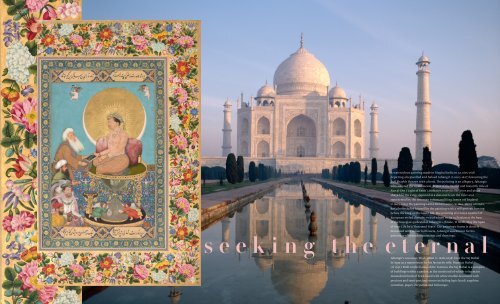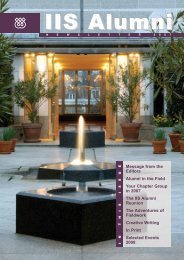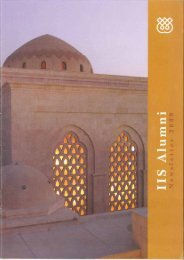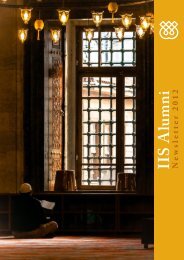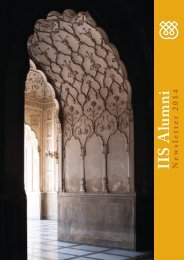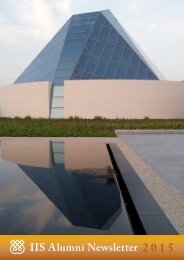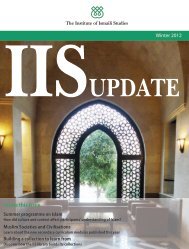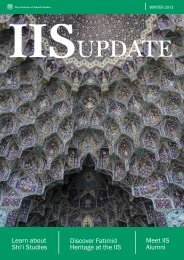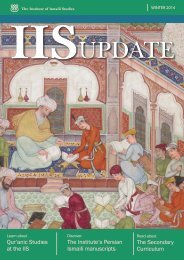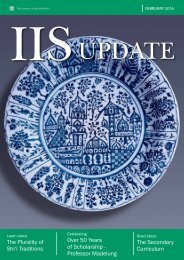Islam an Illustrated Journey extract
An extract of pages from Islam an Illustrated Journey - pilgimage
An extract of pages from Islam an Illustrated Journey - pilgimage
Create successful ePaper yourself
Turn your PDF publications into a flip-book with our unique Google optimized e-Paper software.
A watercolour painting made in Mughal India in ca. 1615–1618<br />
depicting a bejewelled <strong>an</strong>d haloed Jah<strong>an</strong>gir (r. 1605-1627) favouring the<br />
Sufi Shaykh Husayn with a book. The painting is <strong>an</strong> allegory. Jah<strong>an</strong>gir,<br />
who adopted the name me<strong>an</strong>t ‘Seizer of the World’ <strong>an</strong>d honorific title of<br />
Nur al-Din (‘Light of Faith’), is shown to prefer the poor <strong>an</strong>d pious<br />
shaykh to the kings depicted at a dist<strong>an</strong>ce from the ruler <strong>an</strong>d<br />
represented by the Ottom<strong>an</strong> sult<strong>an</strong> <strong>an</strong>d King James i of Engl<strong>an</strong>d<br />
(r. 1603–1625). The painting’s artist Bichitr (active ca. 1610–1660), a Hindu,<br />
has also included himself in the painting with a self-portrait bowing<br />
before the king on the lower left. The painting also has a number of<br />
Europe<strong>an</strong> styled cherubs, two of whom write in Persi<strong>an</strong> at the base<br />
of the hourglass pedestal of Jah<strong>an</strong>gir’s throne, ‘O Shah, May the Sp<strong>an</strong><br />
of Your Life be a Thous<strong>an</strong>d Years’. The painting’s frame is densely<br />
decorated with colourful flowers. Jah<strong>an</strong>gir was known for his<br />
patronage of bot<strong>an</strong>ical paintings <strong>an</strong>d drawings.<br />
seeking the eternal<br />
Jah<strong>an</strong>gir’s successor, Shah Jah<strong>an</strong> (r. 1628–1658) built the Taj Mahal<br />
in Agra as a mausoleum for his favourite wife, Mumtaz Mahal<br />
(d. 1631). Built on the b<strong>an</strong>ks of the Yamuna, the Taj Mahal is a complex<br />
of buildings within a garden, at the north end of which is the main<br />
mausoleum built of brick faced with white marble decorated with<br />
precious <strong>an</strong>d semi-precious stones including lapis lazuli, sapphire,<br />
corneli<strong>an</strong>, jasper, chrysolite <strong>an</strong>d heliotrope.


